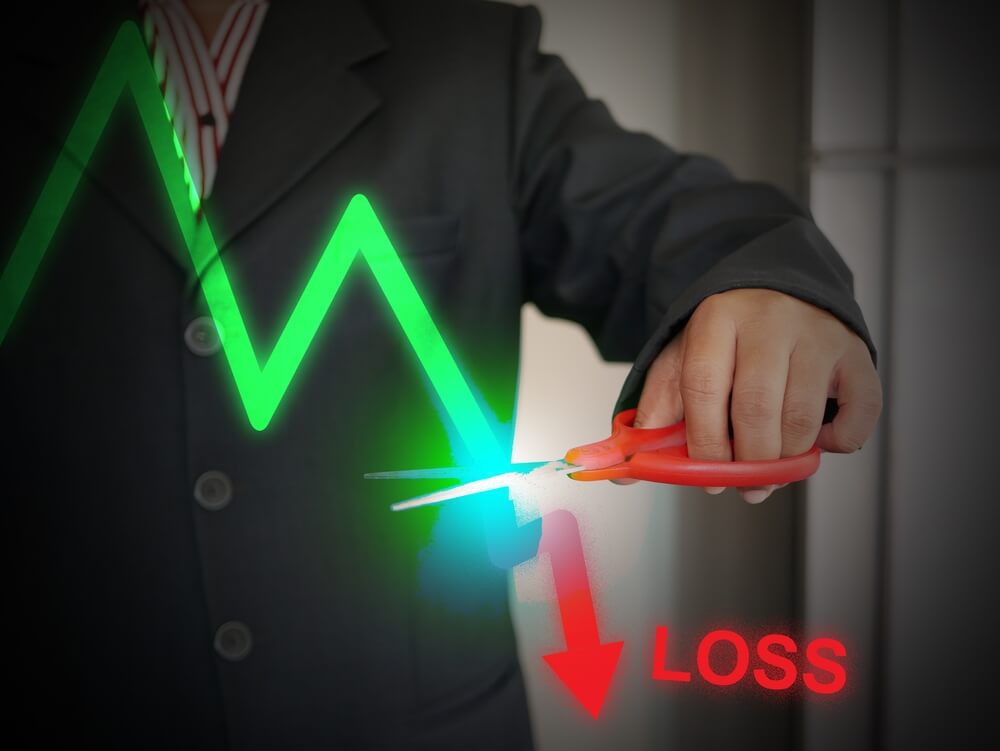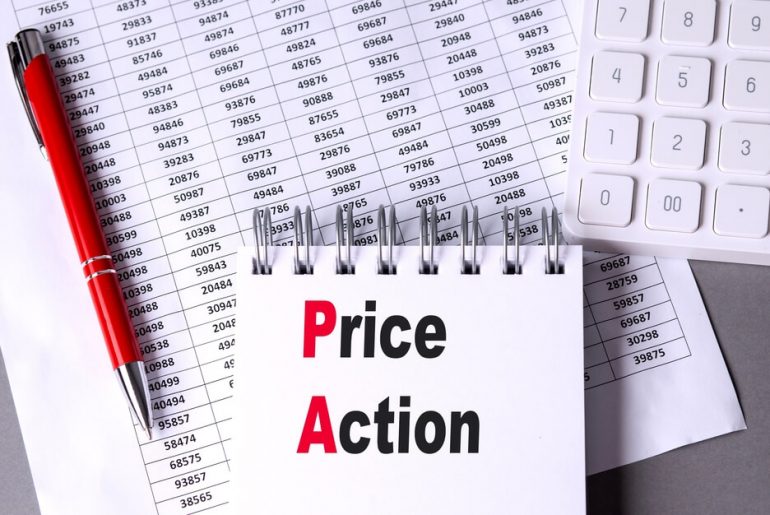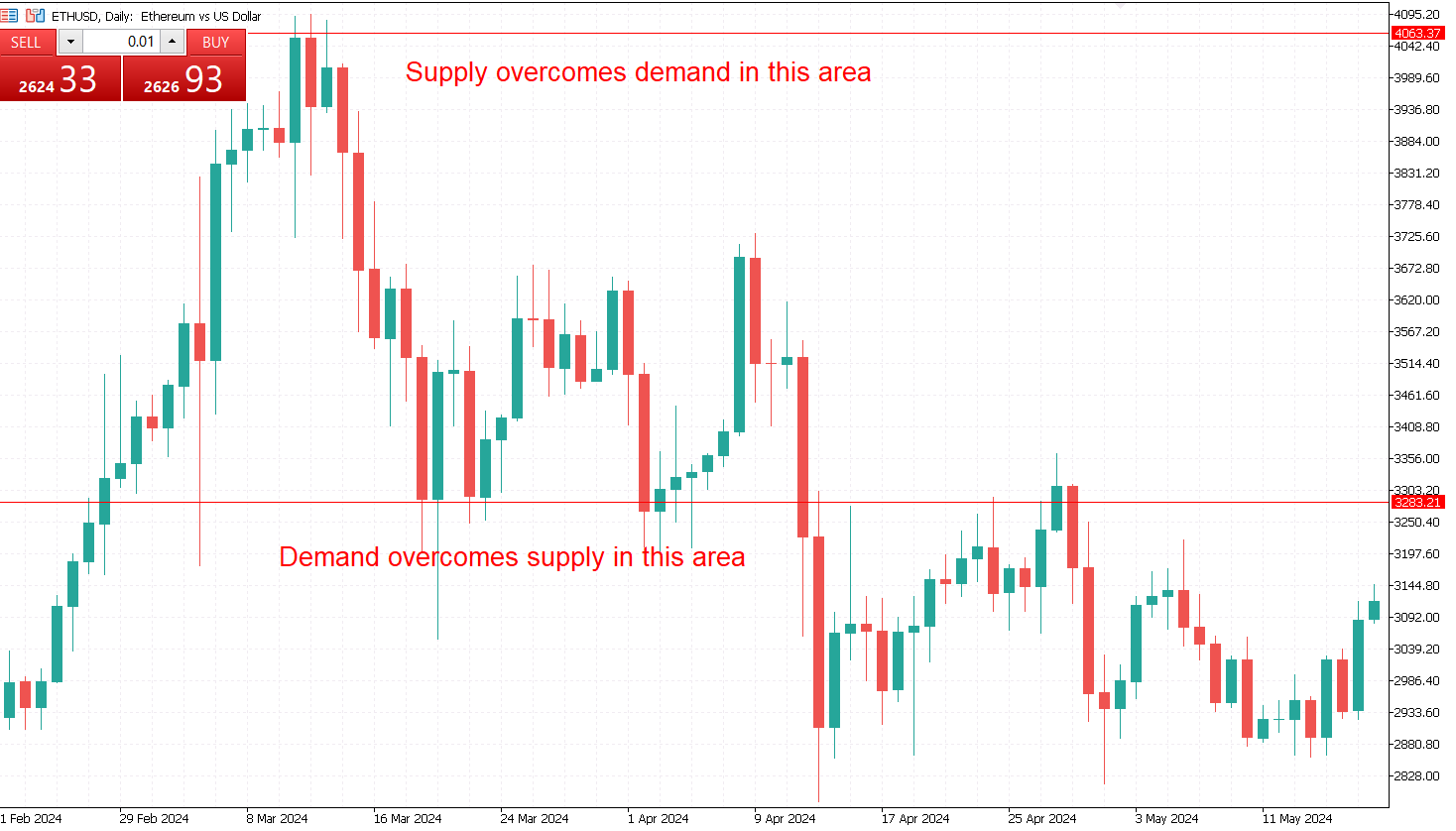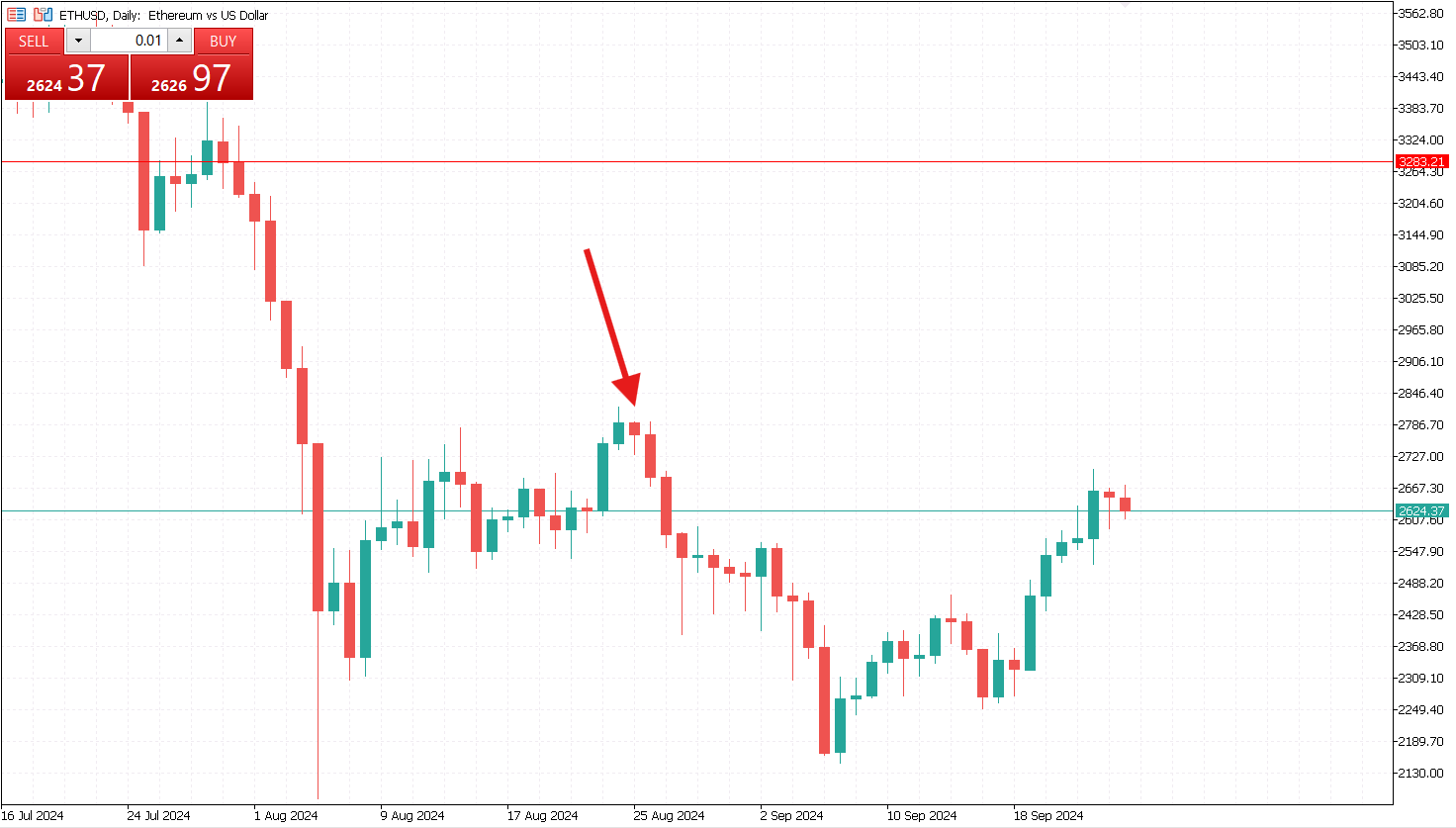Price action trading is among the most fundamental approaches in the trading world. It focuses on interpreting raw price movements to make informed decisions without relying on technical indicators. Traders use price action to analyze the market’s behavior by reading candlestick patterns, pinpointing support and resistance levels, and drawing trendlines.
This method operates on the premise that all the necessary information about the market is already reflected in the price. By understanding how prices behave and form specific patterns, traders can anticipate future movements and capitalize on profitable opportunities. This article will dive into the essentials of price action, highlighting its proven effectiveness. Traders can incorporate it into their strategies to trade more confidently and make more informed decisions, reassured by its track record.

Understanding the Basics of Price Action
Before traders embark on this method, it’s essential to understand the principles of price action. This trading strategy relies solely on interpreting price movement on a chart without the need for technical indicators or complex systems. It’s about observing raw price data stemming from the belief that price reflects all relevant information. This straightforward approach can empower traders, giving them the confidence to make informed decisions.
While technical analysis often employs indicators, price action traders look directly at candlesticks, trendlines, and support/resistance levels. They should also observe the market structure to make more informed decisions.
While price action does not require any technical indicator or complex math algorithm, traders can still use them with various Japanese candlestick setups to make better market decisions. This adaptability is a crucial strength of price action trading, allowing traders to navigate different market conditions. Learning price action will also give market participants insights into the forces driving the market, further enhancing their adaptability.
Starting with Supply and Demand
Price changes in the financial markets are driven by supply and demand. When demand exceeds supply, the price rises; when supply exceeds demand, the price falls. This fundamental economic concept applies to all types of financial markets, including Forex, commodities, stocks, and even cryptocurrencies. Understanding how these forces interact on the price chart is essential for price action trading.
Supply and demand manifest in the market through support and resistance levels, or even better, areas. Support occurs when demand overcomes supply, while resistance is formed when supply overcomes demand. Price action traders strive to identify these levels to anticipate turning points and optimize their entry and exit points. Mastering the concept of supply and demand is vital to successfully applying price action strategies.
Analyzing Market Trends with Price Swings and Trendlines
Understanding the broader market trend is essential before placing a trade. Trends represent the market’s general direction, either upward, downward, or sideways. Price swings and trendlines are critical for assessing the market structure and determining trend direction.
Price swings refer to the natural movement of the market, creating higher highs and higher lows in an uptrend and lower highs and lower lows in a downtrend. Observing these swings helps traders assess whether the market is trending or ranging. Conversely, trendlines are drawn by connecting the swing highs and lows, visually representing the current market trend. These lines act as dynamic support or resistance and help traders identify the best opportunities to enter or exit trades.
Identifying Entry Points with Price Patterns
After establishing a trend, the next step is identifying precise entry points. This is when price patterns, known as Japanese candlestick setups, are used. They provide traders with key signals, allowing them to see where the price may reverse or start a correction. Some of the most common patterns include hammer, inverted hammer, shooting star, engulfing, etc.
To successfully trade with price action, it is vital to focus on the context. Patterns are most effective when analyzed with support and resistance levels or within the prevailing trend. For instance, if you find a shooting star pattern, it should be at the resistance level, while the hammer appears at the support line. By learning to recognize and apply these patterns and understanding the context, traders will make timely decisions based on the market situation, which improves the likelihood of profitable trades.
Setting Logical Stop-Losses with Price Action
Risk management is a cornerstone of successful trading, and price action provides clear guidelines for setting stop-losses. This type of order allows market participants to determine a particular level of risk and triggers if the price reaches it. It is essential to use stop-losses based on market conditions.
Price action helps traders identify logical stop-loss points by analyzing the market structure and volatility. For instance, placing a stop-loss below a recent swing low in an uptrend can provide reasonable protection against downside momentum. Traders can enhance their risk management practices by using price action as a guide for stop-loss placement.

Identifying Target Levels with Price Action
Apart from stop-losses, traders often use take profit orders to close their trades when targets are reached automatically. While many traders focus on entries, understanding where to leave the market is equally important. Price action helps traders determine optimal profit-taking points by analyzing real-time price movements and patterns.
One effective technique for taking profits is protecting targets based on chart patterns. For instance, in a bullish flag pattern, traders can identify targets by measuring the length of the flagpole. Support or resistance levels are also significant for understanding trading targets, as the price may reverse at them. By letting price action guide profit-taking decisions, traders can lock in gains and improve their overall trading performance.
Price action trading is a versatile and effective method that provides traders with a clear framework for analyzing market movements. By focusing on key concepts such as demand and supply dynamics, trendlines, price patterns, and risk management, traders can enhance their decision-making and improve their overall trading performance. Mastery of these fundamentals allows traders to understand market trends better and make more informed, strategic trades based on real-time price movements, ultimately leading to greater consistency and success in the markets.








